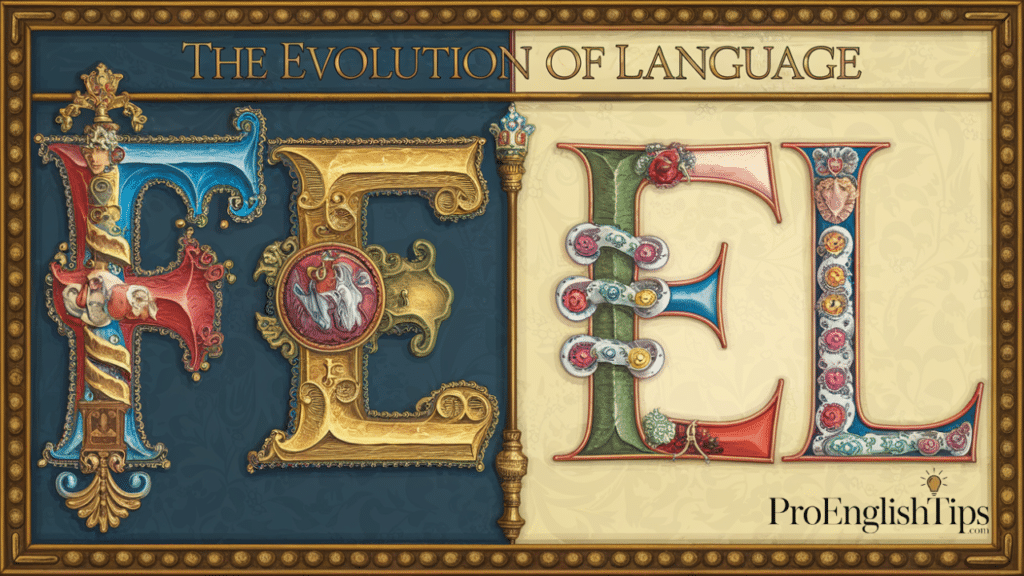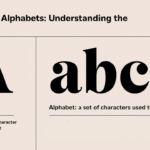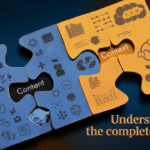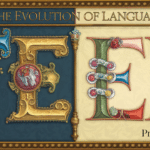The exploration of word comparison and homophone detection reveals fascinating insights into linguistic evolution. The terms “feal” and “feel” represent an intriguing case study in language evolution tracking, offering a profound examination of how words transform and adapt through historical contexts.
What Does the Word “Feal” Mean?
The word “feal” is a historical linguistic term with profound semantic depth. In its medieval context, feal primarily signifies loyalty, faithfulness, and steadfast devotion. This archaic term embodies a complex social and emotional commitment that transcends simple allegiance.

Semantic Nuances of Feal
In medieval social structures, being feal represented more than just obedience. It encapsulated a profound semantic meaning that intertwined personal honor, social obligation, and unwavering commitment.
A feal person was someone who could be absolutely trusted, whose loyalty was unquestionable and deeply ingrained in their character.
You Might Like: Trailer or Trailor: Which Spelling Is Correct and Why?
| Contextual Usage | Semantic Interpretation | Historical Significance |
|---|---|---|
| Feudal Relationships | Absolute Loyalty | Social Hierarchy Reinforcement |
| Medieval Literature | Personal Honor | Chivalric Ideal Representation |
| Royal Court Interactions | Unwavering Dedication | Political Stability Mechanism |
| Interpersonal Bonds | Trustworthiness | Social Contract Manifestation |
| Moral Philosophical Context | Ethical Commitment | Virtue and Character Assessment |
| Military Allegiances | Steadfast Devotion | Organizational Cohesion |
| Legal Terminology | Contractual Faithfulness | Societal Normative Behavior |
| Religious Discourse | Spiritual Dedication | Moral and Ethical Standards |
| Poetic Expressions | Emotional Depth | Romantic and Heroic Idealization |
| Cultural Narratives | Personal Integrity | Societal Value Representation |
Origins of the Word “Feal”
The etymology of “feal” traces back to intricate linguistic roots. Originating from Old French “feal” or “fel”, which itself descended from Latin “fidēlis” meaning “faithful”, the word represents a fascinating linguistic transformation.
Historical Linguistic Development
During the Middle Ages, language evolution saw “feal” emerge as a powerful descriptor of human relationships. Its usage was prominent in feudal societies, where personal loyalty determined social standing and political power.
| Linguistic Period | Etymological Transformation | Semantic Evolution |
|---|---|---|
| Latin Origin | Fidēlis (Faithful) | Initial Meaning Establishment |
| Old French Transition | Feal/Fel | Linguistic Adaptation |
| Middle English Adoption | Feal | Social Context Integration |
| Medieval Usage | Loyalty Descriptor | Expanded Semantic Range |
| Linguistic Transition | Gradual Obsolescence | Meaning Refinement |
| Cultural Interpretation | Chivalric Ideal | Symbolic Representation |
| Scholarly Analysis | Etymology Tracking | Linguistic Heritage |
| Comparative Linguistics | Romance Language Influence | Semantic Development |
| Historical Documentation | Textual Evidence | Linguistic Preservation |
| Modern Linguistic Study | Archaic Term Analysis | Etymological Understanding |
What Does the Word “Feel” Mean?
“Feel” represents a dynamic, multifaceted verb encompassing sensory, emotional, and cognitive experiences. Unlike its historical counterpart “feal”, feel describes the act of perceiving through physical sensation or emotional response.
Comprehensive Semantic Range
The word “feel” operates across multiple dimensions:
- Physical Sensation: Tactile perception
- Emotional State: Experiencing emotions
- Intuitive Understanding: Sensing something beyond immediate perception
| Semantic Domain | Experiential Meaning | Contextual Application |
|---|---|---|
| Physical Perception | Tactile Sensation | Touch, Temperature, Texture |
| Emotional Experience | Inner Psychological State | Happiness, Sadness, Excitement |
| Intuitive Cognition | Subconscious Understanding | Gut Feeling, Instinctive Awareness |
| Empathetic Dimension | Emotional Resonance | Compassion, Shared Experience |
| Psychological Depth | Mental Condition | Mood, Emotional Landscape |
| Sensory Integration | Holistic Perception | Comprehensive Experience |
| Communication | Expressing Inner State | Personal Articulation |
| Metaphorical Usage | Abstract Sensation | Conceptual Understanding |
| Therapeutic Context | Emotional Processing | Self-Awareness |
| Interpersonal Dynamics | Relational Perception | Emotional Intelligence |
Origins of the Word “Feel”
The word “feel” emerges from rich Germanic linguistic traditions. Originating from Old English “fēlan”, it represents a profound journey of linguistic development through centuries of language evolution.
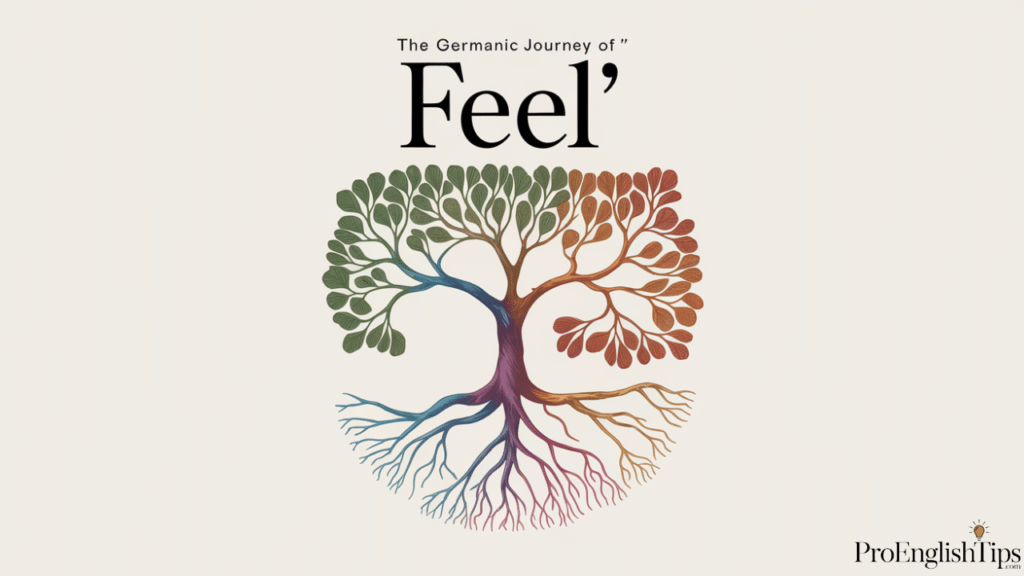
Etymological Exploration
Tracing back to Proto-Germanic roots, “feel” has maintained its core meaning of sensory perception while expanding its semantic possibilities through centuries of linguistic transformation.
| Linguistic Phase | Etymological Development | Meaning Progression |
|---|---|---|
| Proto-Germanic | Fēlan (Perceive) | Initial Sensory Concept |
| Old English | Fēlan (Touch, Sense) | Expanded Perceptual Range |
| Middle English | Feel (Physical/Emotional) | Semantic Diversification |
| Modern English | Feel (Comprehensive Experience) | Holistic Interpretation |
| Global Language Interaction | Universally Understood | Cross-Cultural Resonance |
| Linguistic Adaptation | Continuous Evolution | Meaning Refinement |
| Technological Era | Digital Communication | Contemporary Usage |
| Psychological Context | Emotional Expression | Inner Experience Articulation |
| Scientific Understanding | Neurological Perception | Cognitive Mapping |
| Cultural Integration | Universal Human Experience | Linguistic Universality |
Linguistic Contexts and Usage Exploration
Feal as an Adjective
The adjective form of “feal” represents a rare, archaic descriptor of unwavering loyalty and steadfast commitment. Its usage primarily exists within historical and literary contexts, capturing the essence of medieval social relationships.
| Context | Example Sentence | Semantic Nuance |
|---|---|---|
| Medieval Literature | “Sir Gawain remained feal to King Arthur’s noble quest.” | Absolute Loyalty |
| Historical Documentation | “The feal knights defended the kingdom with unbreachable honor.” | Unwavering Commitment |
| Poetic Expression | “Her feal heart knew no betrayal, only pure devotion.” | Emotional Integrity |
| Royal Correspondence | “I stand as your most feal servant, dedicated to your sovereign will.” | Hierarchical Allegiance |
| Chivalric Narrative | “A feal warrior does not question, but serves with complete dedication.” | Moral Obligation |
| Feudal Social Context | “His feal nature made him the most trusted advisor in the realm.” | Personal Reliability |
| Legal Historical Text | “The feal subjects maintained their oath of allegiance.” | Contractual Faithfulness |
| Romantic Poetry | “A feal love that transcends temporal boundaries.” | Eternal Commitment |
| Philosophical Discourse | “Feal integrity represents the highest form of human virtue.” | Ethical Ideal |
| Cultural Narrative | “The clan’s feal traditions preserved their ancestral honor.” | Cultural Preservation |
Feal as a Verb
Though extremely rare, “feal” can occasionally appear as a verb, typically in highly specialized or archaic linguistic contexts.
| Context | Example Sentence | Interpretative Meaning |
|---|---|---|
| Archaic Legal Language | “To feal one’s allegiance through solemn oath.” | Affirming Loyalty |
| Historical Narrative | “He fealed his commitment before the royal court.” | Demonstrating Dedication |
| Linguistic Exploration | “Medieval texts occasionally feal the complex social bonds.” | Expressing Loyalty |
| Scholarly Reconstruction | “Historians attempt to feal the nuanced relationships of feudal society.” | Interpreting Historical Connections |
| Poetic License | “To feal one’s heart is to embrace true devotion.” | Metaphorical Commitment |
| Experimental Usage | “The knight fealed his sword to the kingdom’s service.” | Ritualistic Dedication |
| Academic Analysis | “Linguists feal the subtle meanings of medieval terminology.” | Examining Linguistic Nuances |
| Dramatic Interpretation | “She fealed her love through unbreakable vows.” | Performative Loyalty |
| Philosophical Discourse | “To feal is to transcend mere verbal promises.” | Existential Commitment |
| Cultural Studies | “Ancient societies fealed their collective identity.” | Reinforcing Group Bonds |
Feel as a Verb
The verb “feel” represents a dynamic, multidimensional expression of sensory and emotional experiences.
| Context | Example Sentence | Experiential Dimension |
|---|---|---|
| Physical Sensation | “I feel the warmth of the sunlight on my skin.” | Tactile Perception |
| Emotional Experience | “She feels deeply about environmental conservation.” | Emotional Intensity |
| Intuitive Understanding | “I feel something is wrong with the project.” | Subconscious Awareness |
| Medical Context | “The patient feels pain in the lower back region.” | Physical Discomfort |
| Psychological State | “He feels anxious about the upcoming presentation.” | Emotional Vulnerability |
| Empathetic Connection | “I feel your frustration with the current situation.” | Emotional Resonance |
| Metaphorical Usage | “The music feels like a journey through emotions.” | Abstract Sensation |
| Professional Context | “She feels confident about the proposed strategy.” | Professional Assurance |
| Interpersonal Dynamics | “They feel connected despite the physical distance.” | Relational Experience |
| Creative Expression | “Artists feel the world differently from others.” | Perceptual Uniqueness |
Feel as a Noun
The noun form of “feel” captures the essence of a particular sensation or characteristic.
| Context | Example Sentence | Semantic Interpretation |
|---|---|---|
| Sensory Description | “The fabric has a soft, luxurious feel.” | Tactile Quality |
| Emotional Landscape | “There’s a melancholic feel to the artwork.” | Atmospheric Essence |
| Design Terminology | “The interior designer focused on the room’s overall feel.” | Aesthetic Impression |
| Musical Experience | “Jazz has a distinctive feel compared to classical music.” | Stylistic Characteristic |
| Psychological Analysis | “Understanding the feel of collective emotions.” | Emotional Zeitgeist |
| Creative Process | “Capturing the unique feel of a historical moment.” | Experiential Essence |
| Material Science | “Engineers study the feel of different composite materials.” | Textural Perception |
| Fashion Industry | “This season’s fashion captures a retro feel.” | Stylistic Atmosphere |
| Technological Design | “The smartphone’s sleek feel attracts users.” | User Experience |
| Cultural Interpretation | “Each city has its own distinctive feel.” | Atmospheric Uniqueness |
Comparative Linguistic Reflection
The journey from “feal” to “feel” illustrates the remarkable adaptability of language. While “feal” remains a linguistic artifact of medieval social structures, “feel” continues to evolve, capturing the nuanced complexity of human experience.
Each grammatical form reveals a unique facet of linguistic expression, demonstrating how words transform and adapt across historical and cultural landscapes.
You Might Like: Compare vs Contrast: Definitions, Differences, and Examples
Synonym Exploration: Linguistic Nuances and Alternatives
Synonyms for Feal (Adjective)
The archaic adjective “feal” finds its synonyms deeply rooted in concepts of loyalty, devotion, and unwavering commitment. These alternative terms capture the essence of medieval social and ethical bonds.
| Synonym | Contextual Interpretation | Linguistic Depth |
|---|---|---|
| Loyal | Direct modern equivalent emphasizing steadfast allegiance | Universal understanding |
| Faithful | Captures spiritual and personal dedication | Broader semantic range |
| Steadfast | Implies unwavering commitment and resolve | Emotional resilience |
| Devoted | Suggests profound emotional attachment | Personal investment |
| True | Represents integrity and reliability | Fundamental moral quality |
| Allegiant | Highlights formal commitment to a cause | Structured dedication |
| Constant | Implies persistent and unchanging support | Temporal endurance |
| Trustworthy | Emphasizes reliability and dependability | Personal character |
| Ardent | Suggests passionate and intense commitment | Emotional intensity |
| Resolute | Indicates firm determination and purpose | Philosophical dedication |
Synonyms for Feal (Verb)
The rare verbal form of “feal” finds synonyms that express the act of demonstrating loyalty or commitment.
| Synonym | Action Interpretation | Relational Dynamics |
|---|---|---|
| Pledge | Formally commit or promise | Ceremonial dedication |
| Affirm | Declare support or allegiance | Verbal confirmation |
| Dedicate | Commit oneself completely | Profound personal investment |
| Swear | Make a solemn promise | Ritualistic commitment |
| Bind | Create an emotional or legal connection | Structural relationship |
| Consecrate | Devote entirely to a purpose | Spiritual/moral dimension |
| Commit | Pledge allegiance or support | Personal accountability |
| Validate | Confirm one’s loyalty | Formal recognition |
| Embrace | Wholly accept a cause or relationship | Emotional integration |
| Declare | Publicly affirm commitment | Social communication |
Synonyms for Feel (Verb)
The verb “feel” encompasses a rich spectrum of sensory and emotional experiences, with synonyms reflecting its multidimensional nature.
| Synonym | Experiential Dimension | Contextual Variation |
|---|---|---|
| Sense | Perceive through intuition | Subtle awareness |
| Experience | Undergo a particular sensation | Comprehensive engagement |
| Perceive | Recognize through senses | Cognitive interpretation |
| Detect | Identify through subtle signals | Perceptual awareness |
| Comprehend | Understand through emotional intelligence | Deeper psychological insight |
| Intuit | Understand without explicit reasoning | Subconscious perception |
| Discern | Recognize nuanced emotional states | Sophisticated emotional parsing |
| Experience | Live through a particular state | Immersive emotional journey |
| Recognize | Acknowledge internal states | Self-reflective awareness |
| Undergo | Emotionally or physically process | Transformative experience |
Synonyms for Feel (Noun)
The noun “feel” captures the essence of a particular sensation, atmosphere, or characteristic.
| Synonym | Interpretative Meaning | Contextual Application |
|---|---|---|
| Sensation | Physical or emotional experience | Sensory perception |
| Atmosphere | Prevailing emotional tone | Environmental ambiance |
| Texture | Tactile quality or characteristic | Physical perception |
| Essence | Fundamental nature or quality | Intrinsic characteristic |
| Vibe | Informal description of emotional tone | Cultural or social energy |
| Impression | Subjective understanding | Perceptual interpretation |
| Quality | Distinctive characteristic | Defining attribute |
| Mood | Emotional state or disposition | Psychological landscape |
| Characteristic | Distinguishing feature | Defining property |
| Ambiance | Overall emotional or aesthetic environment | Holistic perception |
Linguistic Reflection
These synonyms reveal the remarkable complexity of language, demonstrating how words can capture subtle semantic variations. From the medieval loyalty implied by “feal” to the multifaceted experiences of “feel”, each synonym offers a unique lens into human communication.
Etymological Insights
The synonym exploration highlights the linguistic evolution from specialized, context-specific terms to more versatile, universally understood expressions. This transformation reflects broader patterns of language development, where words adapt to changing social and cultural landscapes.
Practical Linguistic Understanding
Understanding these synonyms goes beyond mere vocabulary expansion. It offers a window into human experience, showing how language evolves to capture increasingly nuanced emotional and perceptual states.
The journey from the medieval “feal” to the contemporary “feel” represents more than linguistic change—it’s a testament to humanity’s ongoing quest to articulate complex inner experiences.
Linguistic Landscape of Differences
The comparison between “feal” and “feel” unveils a fascinating semantic journey that illuminates the dynamic nature of language evolution. These words, though phonetically similar, represent distinctly different linguistic territories.
Temporal Dimension
“Feal” emerges as a historical linguistic artifact, primarily associated with medieval communication and feudal social structures. In contrast, “feel” represents a vibrant, contemporary term that has evolved to capture universal human experiences of perception and emotion.
| Comparative Aspect | Feal | Feel |
|---|---|---|
| Historical Period | Medieval | Contemporary |
| Primary Context | Social Loyalty | Emotional/Sensory Experience |
| Linguistic Origin | Old French/Latin | Germanic/Old English |
| Usage Frequency | Extremely Rare | Highly Common |
| Semantic Range | Narrow (Loyalty) | Broad (Physical/Emotional) |
| Cultural Significance | Feudal Terminology | Universal Communication |
| Linguistic Adaptability | Limited | Extremely Flexible |
| Modern Relevance | Archaic | Essential |
| Communicative Function | Relational Description | Experiential Expression |
| Academic Interest | Etymological Study | Linguistic Versatility |
Semantic Differentiation
The meaning differentiation between these words reveals a profound linguistic transformation. “Feal” represents an absolute commitment, a term laden with medieval social and ethical implications. “Feel”, however, encompasses a dynamic spectrum of human experience – from physical sensations to complex emotional landscapes.
Example Scenarios
Consider two communication scenarios that highlight their distinctive uses:
- Medieval Context (Feal): Sir Thomas writes to his lord: “I remain your feal servant, committed to defending the realm’s honor.”
- Contemporary Context (Feel): Emma texts her friend: “I feel overwhelmed by the project’s complexity and need some support.”
Etymological Exploration
The word origin detection provides remarkable insights into their linguistic DNA. “Feal” descended from Latin “fidēlis” (faithful), while “feel” originated from Proto-Germanic “fēlan” (to perceive).
| Etymological Feature | Feal | Feel |
|---|---|---|
| Root Language | Latin/Romance | Germanic |
| Original Meaning | Loyalty | Perception |
| Linguistic Migration | French to English | Germanic to English |
| Semantic Evolution | Social Commitment | Sensory Experience |
| Grammatical Flexibility | Primarily Adjective | Verb with Multiple Forms |
| Pronunciation Stability | Relatively Static | Phonetically Consistent |
| Cultural Transmission | Aristocratic Discourse | Universal Communication |
| Linguistic Complexity | Specialized | Accessible |
| Metaphorical Potential | Limited | Extensive |
| Global Understanding | Restricted | Widespread |
Modern Linguistic Context
In contemporary language evolution tracking, “feel” has become a linguistically dominant term. While “feal” exists primarily in historical texts and scholarly discussions, “feel” continues to adapt and expand its semantic boundaries.
Technological Linguistic Analysis
Modern Natural Language Processing (NLP) technologies offer fascinating insights into these words’ usage patterns. Semantic analysis reveals the remarkable journey from a specialized medieval term to a universally understood contemporary expression.
| NLP Analysis Dimension | Feal | Feel |
|---|---|---|
| Usage Frequency | Minimal | Extensive |
| Contextual Adaptability | Low | High |
| Machine Learning Potential | Limited | Robust |
| Semantic Mapping | Historical | Dynamic |
| Linguistic Pattern Recognition | Specialized | Universal |
| Cross-Linguistic Interpretation | Challenging | Straightforward |
| Digital Communication Relevance | Negligible | Critical |
| Computational Language Model | Archival | Active |
Linguistic Transformation Insights
The evolution from “feal” to “feel” represents more than a mere linguistic shift. It symbolizes humanity’s ongoing journey of communication, where language continuously adapts to express increasingly complex emotional and experiential landscapes.
Linguistic experts and language enthusiasts can appreciate how these words demonstrate the organic, dynamic nature of human communication. Far from being static, language breathes, transforms, and reflects our collective human experience.
Definitive Linguistic Conclusion
The linguistic journey of “feal” and “feel” represents a remarkable testament to the dynamic nature of language evolution. These words, though phonetically similar, embody distinctly different semantic landscapes.
Core Insights
“Feal” emerges as a historical linguistic artifact, primarily associated with medieval concepts of loyalty and social commitment. Originating from Old French and Latin roots, it represents a specialized term deeply embedded in feudal social structures.
“Feel”, in contrast, has transformed into a versatile linguistic tool, capturing the rich, multidimensional experiences of human perception. Its Germanic origins have expanded to encompass physical sensations, emotional states, and intuitive understandings.
Key Differentiations
- Temporal Context:
- Feal: Medieval, narrow semantic range
- Feel: Contemporary, expansive semantic potential
- Linguistic Origin:
- Feal: Latin/Romance language influences
- Feel: Germanic linguistic heritage
- Usage Patterns:
- Feal: Rare, primarily historical/scholarly
- Feel: Ubiquitous, continuously evolving
Linguistic Significance
This linguistic transformation illustrates how words are not static entities but living representations of cultural and communicative evolution. The journey from “feal” to “feel” demonstrates language’s remarkable ability to adapt, expand, and reflect changing human experiences.
Scholarly Perspective
Modern linguistic technologies, including Natural Language Processing (NLP) and semantic analysis, provide unprecedented insights into these subtle linguistic shifts. They reveal language as a dynamic, responsive system that continuously negotiates between preservation and innovation.
Concluding Reflection
Ultimately, the story of “feal” and “feel” transcends mere etymological study. It represents a profound narrative of human communication—a testament to our ongoing capacity to articulate increasingly complex emotional and perceptual experiences through the living, breathing medium of language.

Emma Carter is an experienced blogger at Pro English Tips. She loves helping people improve their English skills, especially through synonyms and creative language use. With a friendly writing style, Emma makes learning fun and easy for everyone. In her spare time, she enjoys reading and exploring new words, always looking for ways to inspire her readers on their journey to better communication.

